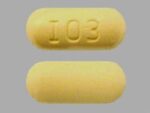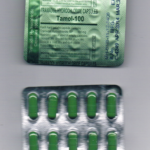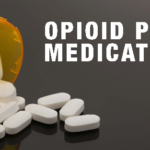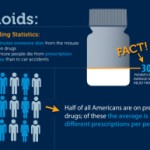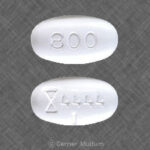Tramadol is used to help relieve moderate to moderately severe pain. Tramadol is similar to opioid analgesics. It works in the brain to change how your body feels and responds to pain. Tramadol is a controlled substance.
It is normally used to treat mild to severe pain. The generic name of this medication is Tramadol and brand name is Ultram and Conzip. Tramadol is available in extended release form and this form is used as 24 hours treatment method for pain. This form of Tramadol cannot be used for as-needed purpose.
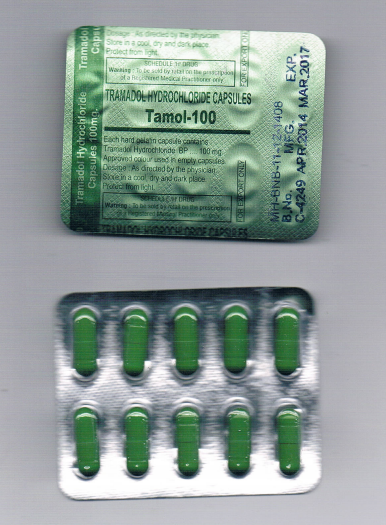
Some Important Information
Avoid taking Tramadol if you have consumed alcohol, tranquilizers, sedatives or narcotic medications couple of hours back. Tramadol can stop or slow breathing, especially whenever the dose is changed or you have started using the medication. Do not break, crush or open a (extended release) pill. Swallow it as whole to avoid fatal complications. Do not use Tramadol in high doses or take it for a prolonged period than prescribed.
Seizures were reported in some people using this medicine. Tramadol can cause seizures especially if you have a history of head injury, seizures, metabolic disorder or in case you are using some medications like muscle relaxers, antidepressants, narcotic drugs or medication for vomiting or nausea.
Tramadol can lead to drug dependency even during regular doses. Take these medications as suggested by your doctor. Do not share the medicine with any other person.
Avoid drinking alcohol as it can lead to harmful effects and even death when Tramadol is combined with alcohol. Tramadol should be taken orally. Do not take this medicine through injection or inhalation as it can result in life threatening side effects or overdose.
Do not take Tramadol if you are allergic to the medication or if you are suffering from
- a blockage in intestines or stomach
- breathing problems or severe asthma
- If you have used sedative, tranquilizers or narcotic drugs recently.
Speak to your doctor regarding seizure, which can increase if you have
- metabolic disorder
- history of alcohol addiction or drug addiction
- history of seizures, epilepsy or head injury
- if you are using other medicines to treat nausea, vomiting, mental illness, migraine headaches, muscles spasms etc.,
To know if Tramadol is suitable for you, tell your health care provider if you have
- stomach disorder
- kidney disease or liver disease
- History of mental illness, alcohol addiction, drug abuse or suicide attempt.
Tramadol can lead to breathing problems in elderly people who are malnourished, debilitated or suffer from severe illness.
What special precautions should I follow?
Before taking tramadol,
- tell your doctor and pharmacist if you are allergic to tramadol, other opiate pain medications, any other medications, or any of the ingredients in tramadol products. Ask your pharmacist for a list of the ingredients.
- tell your doctor or pharmacist if you are taking or receiving the following monoamine oxidase (MAO) inhibitors or if you have stopped taking them within the past 2 weeks: isocarboxazid (Marplan), linezolid (Zyvox), methylene blue, phenelzine (Nardil), selegiline (Eldepryl, Emsam, Zelapar), or tranylcypromine (Parnate). Your doctor will probably tell you not to take tramadol if you are taking one or more of these medications, or have taken them within the past 2 weeks.
- tell your doctor and pharmacist what other prescription and nonprescription medications, vitamins, and nutritional supplements you are taking or plan to take. Be sure to mention any of the following: anticoagulants (‘blood thinners’) such as warfarin (Coumadin, Jantoven); bupropion (Aplenzin, Wellbutrin, Zyban); cyclobenzaprine (Amrix); dextromethorphan (found in many cough medications; in Nuedexta); digoxin (Lanoxin); diuretics (‘water pills’); lithium (Lithobid); certain medications for migraine headaches such as almotriptan (Axert), eletriptan (Relpax), frovatriptan (Frova), naratriptan (Amerge), rizatriptan (Maxalt), sumatriptan (Imitrex, in Treximet), and zolmitriptan (Zomig); mirtazapine (Remeron); promethazine; 5-HT3 receptor antagonists such as alosetron (Lotronex), dolasetron (Anzemet), granisetron (Kytril), ondansetron (Zofran, Zuplenz), or palonosetron (Aloxi); selective serotonin reuptake inhibitors (SSRIs) such as citalopram (Celexa), fluoxetine (Prozac, Sarafem, Selfemra), fluvoxamine (Luvox), paroxetine (Paxil, Pexeva), and sertraline (Zoloft); serotonin norepinephrine reuptake inhibitors (SNRIs) such as desvenlafaxine (Pristiq, Khedezla), duloxetine (Cymbalta), milnacipran (Savella), and venlafaxine (Effexor); trazodone (Oleptro); and tricyclic antidepressants such as amitriptyline, amoxapine, clomipramine (Anafranil), desipramine (Norpramin), doxepin (Silenor, Zonalon), imipramine (Tofranil), nortriptyline (Pamelor), protriptyline (Vivactil), and trimipramine (Surmontil). Many other medications may also interact with tramadol, so be sure to tell your doctor about all the medications you are taking, even those that do not appear on this list. Your doctor may need to change the doses of your medications or monitor you carefully for side effects.
- tell your doctor what herbal products you are taking, especially St. John’s wort and tryptophan.
- tell your doctor if you have any of the conditions mentioned in the IMPORTANT WARNING section, a blockage or narrowing of your stomach or intestines, or paralytic ileus (condition in which digested food does not move through the intestines). Your doctor may tell you not to take tramadol if you have any of these conditions.
- tell your doctor if you have or have ever had seizures; an infection in your brain or spine; difficulty urinating; thoughts about harming or killing yourself or planning or trying to do so; or kidney or liver disease.
- tell your doctor if you are breastfeeding. You should not breastfeed while taking tramadol. Tramadol can cause shallow breathing, difficulty or noisy breathing, confusion, more than usual sleepiness, trouble breastfeeding, or limpness in breastfed infants.
- you should know that this medication may decrease fertility in men and women. Talk to your doctor about the risks of taking tramadol.
- if you are having surgery, including dental surgery, tell the doctor or dentist that you are taking tramadol.
- you should know that this medication may make you drowsy and may affect your coordination. Do not drive a car or operate machinery until you know how this medication affects you.
- you should know that tramadol may cause dizziness, lightheadedness, and fainting when you get up from a lying position. To avoid this, get out of bed slowly, resting your feet on the floor for a few minutes before standing up.
- if you have phenylketonuria (PKU; an inherited condition in which a special diet must be followed to prevent mental retardation, you should know that the orally disintegrating tablets contain aspartame, a source of phenylalanine.
- you should know that tramadol may cause constipation. Talk to your doctor about changing your diet and using other medications to treat or prevent constipation.
What side effects can this medication cause?
Tramadol may cause side effects. Tell your doctor if any of these symptoms are severe or do not go away:
- sleepiness
- difficulty falling asleep or staying asleep
- headache
- nervousness
- uncontrollable shaking of a part of the body
- muscle tightness
- changes in mood
- heartburn or indigestion
- dry mouth
Some side effects can be serious. If you experience any of these symptoms or those mentioned in the IMPORTANT WARNING section, call your doctor immediately or get emergency medical treatment:
- seizures
- hives
- rash
- blisters
- difficulty swallowing or breathing
- swelling of the eyes, face, throat, tongue, lips, hands, feet, ankles, or lower legs
- hoarseness
- agitation, hallucinations (seeing things or hearing voices that do not exist), fever, sweating, confusion, fast heartbeat, shivering, severe muscle stiffness or twitching, loss of coordination, nausea, vomiting, or diarrhea
- nausea, vomiting, loss of appetite, weakness, or dizziness
- inability to get or keep an erection
- irregular menstruation
- decreased sexual desire
- changes in heartbeat
- loss of consciousness
If you experience a serious side effect, you or your doctor may send a report to the Food and Drug Administration’s (FDA) MedWatch Adverse Event Reporting program online (http://www.fda.gov/Safety/MedWatch) or by phone (1-800-332-1088).
Tramadol may cause other side effects. Tell your doctor if you have any unusual problems while you are taking this medication.
Is Tramadol Addictive?
Most people think Tramadol is a narcotic like drug and there is no risk of addiction. The fact is that Tramadol can be addictive too because its highly effective for first six months and once an individual gets trapped in process of consuming more to achieve the same level of pain relief, they get addictive to the drug.
It is a misconception that Tramadol being a non narcotic medication is non addictive. Although in case of Tramadol the risk of addiction is quite lower as compared to other narcotic drugs. Again misuse of this drug or taking it in high doses has its own set of complications.
In case of emergency/overdose
In case of overdose, call the poison control helpline at 1-800-222-1222. Information is also available online at https://www.poisonhelp.org/help. If the victim has collapsed, had a seizure, has trouble breathing, or can’t be awakened, immediately call emergency services at 911.
While taking tramadol, you should talk to your doctor about having a rescue medication called naloxone readily available (e.g., home, office). Naloxone is used to reverse the life-threatening effects of an overdose. It works by blocking the effects of opiates to relieve dangerous symptoms caused by high levels of opiates in the blood. Your doctor may also prescribe you naloxone if you are living in a household where there are small children or someone who has abused street or prescription drugs. You should make sure that you and your family members, caregivers, or the people who spend time with you know how to recognize an overdose, how to use naloxone, and what to do until emergency medical help arrives. Your doctor or pharmacist will show you and your family members how to use the medication. Ask your pharmacist for the instructions or visit the manufacturer’s website to get the instructions. If symptoms of an overdose occur, a friend or family member should give the first dose of naloxone, call 911 immediately, and stay with you and watch you closely until emergency medical help arrives. Your symptoms may return within a few minutes after you receive naloxone. If your symptoms return, the person should give you another dose of naloxone. Additional doses may be given every 2 to 3 minutes, if symptoms return before medical help arrives.
Symptoms of overdose may include the following:
- decreased size of the pupil (the black circle in the center of the eye)
- difficulty breathing
- slow or shallowing breathing
- extreme drowsiness or sleepiness
- unable to respond or wake up
- slowed heartbeat
- muscle weakness
- cold, clammy skin
What other information should I know?
Keep all appointments with your doctor and laboratory. Your doctor may order certain lab tests to check your body’s response to tramadol.
Before having any laboratory test (especially those that involve methylene blue), tell your doctor and the laboratory personnel that you are taking tramadol.
Do not let anyone else take your medication. Tramadol is a controlled substance. Prescriptions may be refilled only a limited number of times; ask your pharmacist if you have any questions.
It is important for you to keep a written list of all of the prescription and nonprescription (over-the-counter) medicines you are taking, as well as any products such as vitamins, minerals, or other dietary supplements. You should bring this list with you each time you visit a doctor or if you are admitted to a hospital. It is also important information to carry with you in case of emergencies.
Brand names
- Conzip®
- Qdolo®
- Rybix® ODT¶
- Ryzolt®¶
- Ultram®¶
- Ultram® ER¶
Brand names of combination products
- Ultracet® (containing Acetaminophen, Tramadol)
¶This branded product is no longer on the market. Generic alternatives may be available.
Last Revised – 11/15/2020
Pain Medications, Pain Relief, and Pain Management
